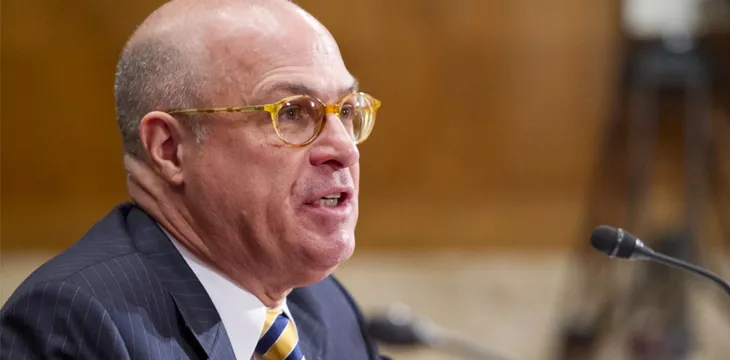|
Getting your Trinity Audio player ready...
|
If the blockchain had been in place ahead of the market crash of 2008, it would have been able to help regulators during the crash. This is the stance of Christopher Giancarlo, chairman of the U.S. Commodity Futures Trading Commission (CFTC), who stated that the technology could have transformed regulator’s ability to respond in real-time to the financial crisis.
Giancarlo offered his position during a speech at the 4th Annual D.C. Blockchain Summit on Wednesday. He led in by explaining, “As you may know, the potential of the blockchain and its impact on financial markets has been a key focus of ours. I first addressed it three years ago when I called for a ‘Do No Harm’ Regulatory Approach to Distributed Ledger Technology. Since then, the CFTC’s Technology Advisory Committee, sponsored by Commissioner Brian Quintenz, established a Subcommittee on Distributed Ledger Technology and Virtual Currencies that we will hear from in a few weeks. Meanwhile, our own Lab CFTC has produced a ‘Primer on Smart Contracts’ that addresses Blockchain and has received a great response.”
Giancarlo was on Wall Street when the crash happened. He points out that he saw the amount of panic and tension as brokers attempted to maintain the markets and explains that trading conditions “were deteriorating by the hour.”
He continues, saying that a real-time ledger, had it been available to everyone on Wall Street, could have provided a substantial boost to the reactions. Instead, brokers and financial experts were left to “assemble piecemeal data” in an effort to try to “recreate complex, individual trading portfolios.”
Giancarlo adds, “[I]magine if in 2008 regulators could have viewed a real-time distributed ledger, and, perhaps, been able to utilize modern cognitive computing capabilities to recognize anomalies in market-wide trade activity and diverging counterparty exposures indicating heightened risk of bank failure. And imagine if, that insight would have shown that the $400 billion notional of outstanding credit default swaps written on Lehman Brothers represented under $8 billion in net market exposure to failure of the firm.”
He asserts that the blockchain, used in combination with “modern cognitive computing capabilities,” would have given regulators the ability to quickly identify patterns and alarms that indicated an impending bank failure and would have highlighted “anomalies in market-wide trade activity and diverging counterparty exposures.”
Giancarlo is a known blockchain enthusiast, but he isn’t always able to make the changes he would like to see. He has to battle career financial pundits who are set in their old ways and are too scared of losing their market share to explore new capabilities, regardless of how beneficial those capabilities are. Fortunately, as time marches on, more individuals like Giancarlo will be put in positions where they can help facilitate the changes so that blockchain can finally find the place it deserves.

 07-18-2025
07-18-2025 





